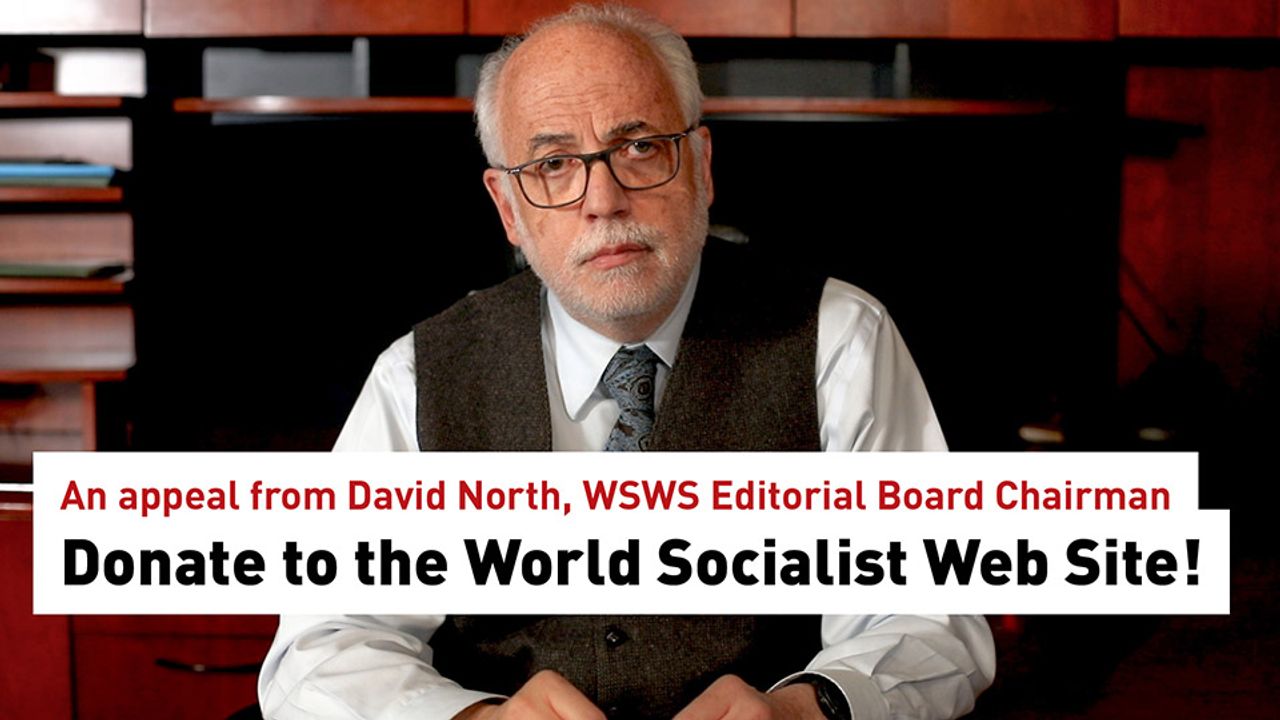Nick Beams
The arrest of Huawei chief financial officer Meng Wanzhou in Canada at the request of the US Justice Department, which is seeking her extradition to the US to face charges that the high-tech Chinese communications firm traded with Iran in breach of US-imposed sanctions, sent share markets in Europe and Asia tumbling and produced major gyrations on Wall Street yesterday.
The wild day on Wall Street began when the futures market opened overnight and the CME Group that runs it halted trading for a brief period “due to volatility.”
When the trading began, the market plunged in the first two hours before a recovery later in the day which left the Dow marginally down by 80 points.
Earlier markets in Asia had fallen by between 2.5 percent and 3 percent on the news of the Meng arrest which threatens to render null and void any trade war ceasefire between the US and China. This was followed by similar falls in European markets which were down by around 3 percent. The European Stoxx 600 index was down by 3.1 percent—its worst one-day fall since Britain voted to leave the European Union in 2016. The UK’s FTSE index fell 3.2 percent, its worst day in two years.
The market turbulence then spread to Wall Street and late morning trade saw the Dow off by 784 points. Combined with the 800-point fall on Tuesday—the market was closed Wednesday due to the funeral of former President George H.W. Bush—this meant the market had experienced a 1,500-point slide in a day and a half.
And then, in an expression of the increased volatility of the past two months, the market began to rise following a report by the Wall Street Journal that the US Federal Reserve was considering whether to signal to the markets that it was prepared to adopt a wait-and-see approach on interest rate increases next year.
The report said Fed officials did not know what their move on rates would be after an expected 0.25 percentage point increase later this month. The expectation had been that the central bank would continue rate rises into 2019. But there have been growing concerns that this could help push the economy into recession. Last month Fed chairman Jerome Powell indicated that its base was close to neutral, meaning that future rises could be slowed or even halted.
The market also received a boost from a speech delivered yesterday by Raphael Bostic, the president of the Atlanta Fed, in which he said the Fed was “within shouting distance” of neutral, that is a rate that neither stimulates nor slows the economy.
The news of Meng’s arrest and the extradition sought by the US came on top of considerable confusion over what was actually agreed to at the discussions between Trump and Xi last Saturday night, with different versions being put out by the two sides.
The move against Huawei does not directly relate to trade because it is based on a claim that the company breached US sanctions against Iran but if it stands it will effectively make any trade deal impossible.
As the equities strategist at the investment bank Jeffries, Laban Yu, told the Financial Times: “While China may stomach fines, investigations and market restrictions against its national champion, we do not believe it will tolerate the arrest of a CFO [chief financial officer],” and that if the US did not change course “trade negotiations are in serious jeopardy.”
The move on Huawei underscores the fact that the conflict is not over trade as such but is rooted in the drive by the US to maintain its dominance in high-tech development which it regards as a threat to its position.
The deepening US-China economic war was by no means the only factor roiling US and global markets. Clear indications that the world economy is slowing down, after a brief period of “synchronised” growth in 2017, is a major ingredient in the growing market turmoil.
The slowdown has been reflected in the sharp fall in oil prices over the past two months as supply has exceeded demand. The benchmark price for crude has fallen from more than $86 per barrel at the beginning of October to $58 yesterday amid forecasts that it would fall still further.
US shale producers featured prominently in yesterday’s Wall Street slide in response to the failure of OPEC, the oil cartel, to reach agreement on production cuts at its meeting in Vienna. Further talks, including with Russia, which is not a member of OPEC, will be held today and an agreement may be reached.
But the downturn in prices has already impacted heavily on US producers and their shares which fell between 6 percent and 9 percent yesterday. The decline is not only cutting profits but tightening credit in the junk bond market used to finance shale projects. There is now a 5.5 percentage point gap in the interest paid in the junk market compared to US Treasuries—the highest level in a year and a half.
The market is also reacting to fears of a recession as reflected the flattening of the yield curve—the convergence of interest rates on short-term government bonds and those on longer-dated securities. Earlier this week, the gap between the yield on the two-year and ten-year Treasuries narrowed to its lowest point in 11 years and yesterday the yield on three-year Treasuries rose above the five-year bond yield, raising the prospect of an inverted yield curve, widely regarded as a sign of recession.

No comments:
Post a Comment